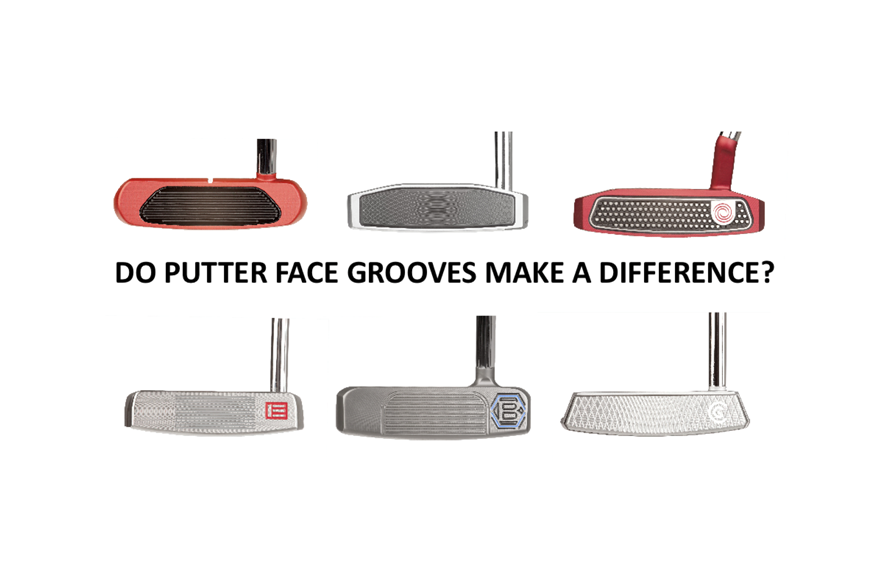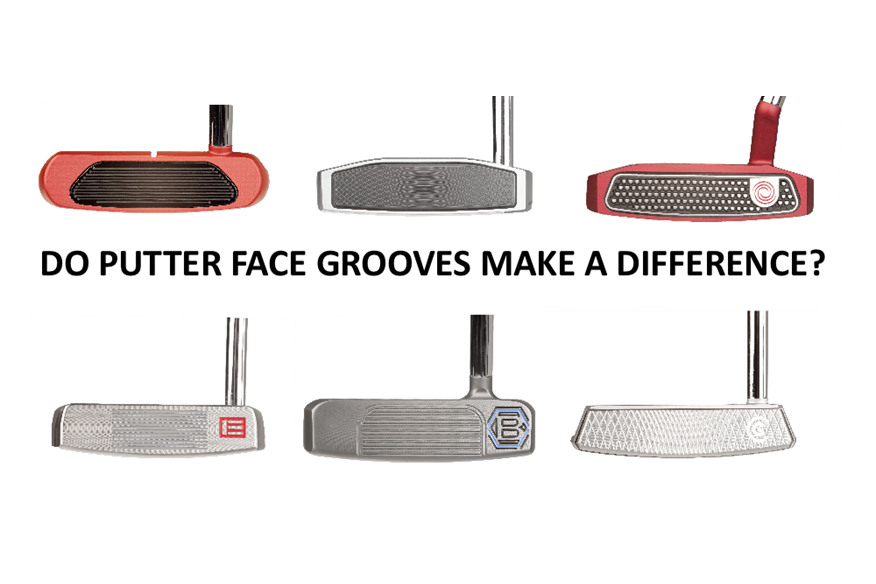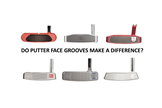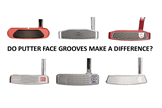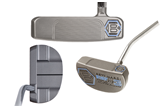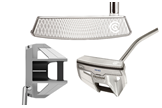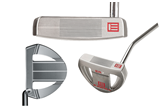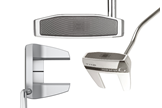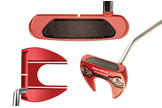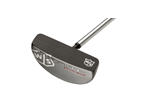TESTED: Do putter face grooves actually make a difference?
Last updated:
Every new major putter launch promises to roll putts better nowadays, but do the face grooves actually make a difference?
Where some putter designers reckon face grooves grab and grip the ball at impact, creating more topspin and reducing skid, others insist hinges on the face lift putts into a better roll. Some even say you don’t need face tech at all. With so many options out there, we thought it was time to find out if any actually work. And if they do, which face design works best…
How we measured skid and roll:
We’re huge fans of Foresight Sports’ GC Quad launch monitor, and its latest update for 2018 means it measures the data of putts in exactly the same way it does for drivers and irons. It was the natural choice to capture data for our test.
We picked a mallet/MOI style putter from each of the leading putter brands who boast face groove tech. We spent a day at Foresight’s HQ in Guildford, with PGA pro Andrew Hillman hitting putts from six-12 feet as the Quad collected data for each one hit. To ensure every putt was hit from a perfect lie we used a Putt Out putting matt, eliminating discrepancies which could occur outside on a real green’s surface.
And to make sure we had a base line with which to compare the grooved models against we also tested a Wilson Staff Infinite South Side putter, which has no grooves on the face whatsoever.
READER TEST: Odyssey Red Ball putters
Ping True Roll from £175
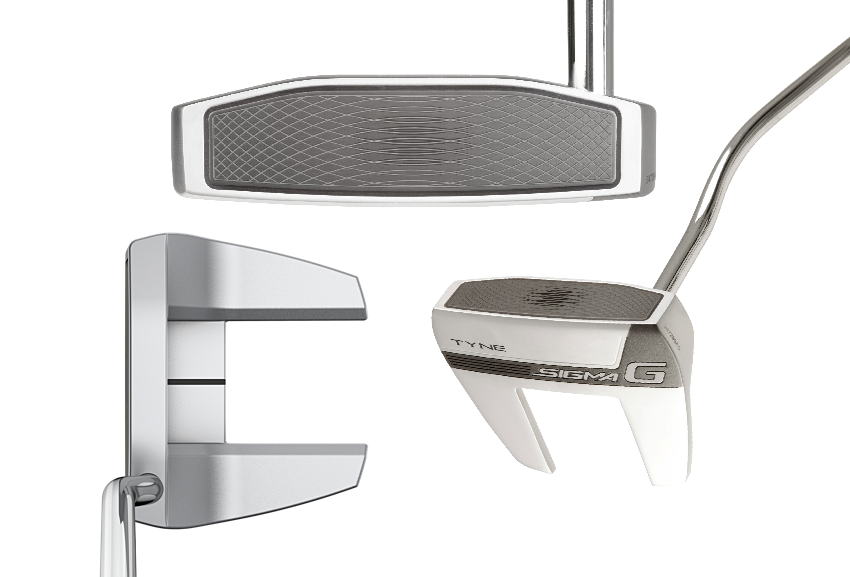
Face material: 6061 aluminium, with a Pebax elastomer backer.
Models with this tech: All 18 Ping Sigma G models.
What Ping says: Variable width and depth grooves on the True Roll face supplement your putting stroke by normalising ball speeds between on and off-centre strikes, ensuring consistent distance control. The Pebax elastomer backer delivers soft-feeling putts without slowing ball speeds.

How it performed: To be fair, Ping’s marketing around the True Roll is less about improving roll or reducing skid, and more about normalising ball speeds across the face. It’s a simple aluminium insert, which once the groove pattern is perfected can be made on a CNC machine by the gazillion. Our data showed how the True Roll delivered very low ball speed deviation (second only to the Cleveland), which supports Ping’s claims of improving distance consistency. Averaged across two testers True Roll delivered the least amount of topspin at impact (which isn’t great), skidded for the least distance (17in tied with the TaylorMade, Evnroll and Wilson, which is good) and got putts rolling within a 100th of a second of the quickest. That tells us it’s a decent performing insert.
See a full Ping Sigma G Tyne putter review here
The anatomy of the perfect putt
Odyssey OWorks from £189
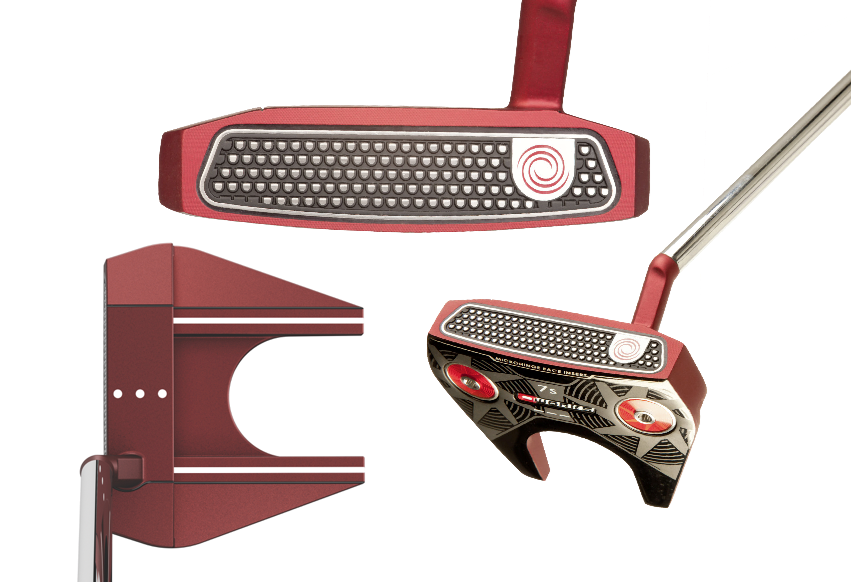
Face material: A stainless steel Microhinge plate is moulded into a thermoplastic elastomer layer.
Models with this tech: All 28 Odyssey OWorks models.
What odyssey says: Microhinge fingers lift putts into a better roll, with gains in topspin regardless of your stroke. A thermoplastic elastomer feel layer generates great feel and feedback.

How it performed: We tested the OWorks insert in our “which putter rolls the best” test last year, so we know it’s top draw when it comes to roll. It’s a complex design to create and the design team’s hard work has definitely paid off – the OWorks created more topspin (122rpm) than any other model we tested. If there’s one thing we’ve learnt since testing putters on a launch monitor though it’s how you need a combination of factors to improve roll – more topspin alone doesn’t simply equate to better roll. So whilst topspin was great, putts skidded further than our test average, yet both testers thought the feel, sound, feedback and roll (to the human eye) were excellent.
See a full Odyssey OWorks #7S putter review here
The anatomy of the perfect putt
TaylorMade Pure Roll from £239
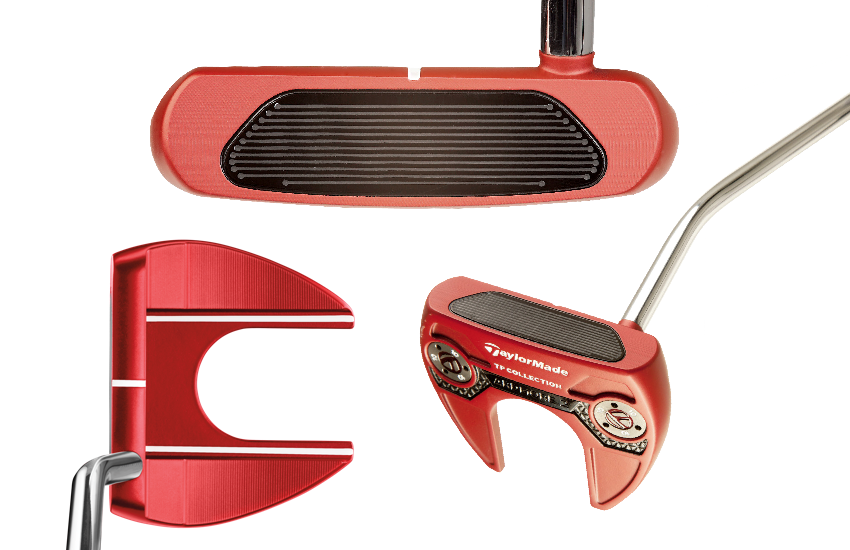
Face material: 6061 aluminium, with soft polymer in each groove.
Models with this tech: All 18 TaylorMade TP/TP Red/TP Black Copper Collection models.
What TaylorMade says: 45° grooves cut into the face reduce skid across a green’s surface and promote better roll. Pure Roll inserts have been specifically designed to bring the grooves into contact with the ball at impact, even on short putts. Used by Rahm, Rory, Justin and Jason Day.

How it performed: TaylorMade has been going great guns with putters ever since they developed red models. They’re all over the tour, so it should be no surprise at all the Ardmore’s Pure Roll insert was second only to the OWorks when it came to topspin. The TaylorMade produced 11% more than our test average, where the OWorks managed 44% more. But when it comes to skid (if we didn’t round numbers up) the Ardmore skidded putts less than any other (16.95in). It explains why plenty of pros are using them, and if we had to hang our hat on just one grooved putter model, this has to be it, as it’s so beautifully rounded when it comes to both categories (creating topspin and reducing skid).
See a full TaylorMade TP Red Collection Ardmore 2 putter review here
The anatomy of the perfect putt
Evnroll Sweet Face from £275
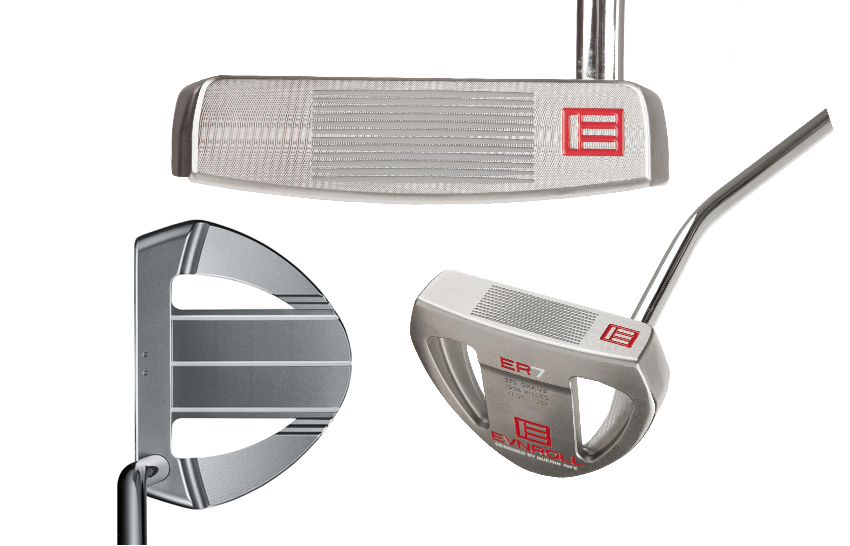
Face material: CNC milled 303 Stainless steel.
Models with this tech: All 12 Evnroll ER models.
What Evnroll says: Closely-spaced grooves create superior roll and soften impact. With progressively more face in contact with the ball on
off-centre hits, more energy is transferred, improving distance consistency. A unique milling pattern helps gear off-centre putts back online.

How it performed: We can’t go as far as supporting Evnroll’s claim of their Sweet Face tech “gearing” putts back online, as it’s virtually impossible to prove or disprove. But by creating similar levels of topspin as our test average, along with the joint lowest skid distance of all the putters here, it’s got to be said Sweet Face is absolutely brilliant. Guerin Rife, Evnroll’s creator, is a clever guy and the tech he’s no doubt pored over for years doesn’t come cheap. Every time though we’ve tested an Evnroll model it’s come out favourably in terms of data looks and feel, which tells its own story. In our book Sweet Face has merit for any golfers wanting to improve roll and distance consistency on the dancefloor.
See a full Evnroll ER7 putter review here
The anatomy of the perfect putt
Bettinardi F.I.T from £289
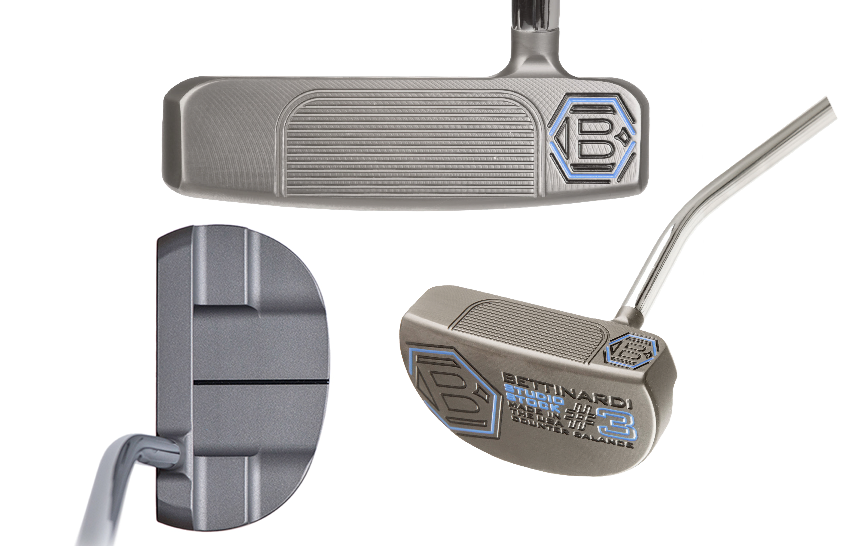
Face material: 6061 aluminium (Inovai), Mild Carbon Steel (Studio Stock).
Models with this tech: 2 x Inovai models and 7 x Studio Stock designs.
What Bettinardi says: Feel Impact Technology (F.I.T) eliminates the need for an insert. 55% of the putter face material is removed to deliver the softest feel of any Bettinardi model. Perfect for players with aggressive putting strokes.

How it performed: Let’s be perfectly clear, Bettinardi makes no claims that his F.I.T face groove pattern improves roll. He instead reckons the pattern softens feel, which we’d happily agree with as Bettinardi putters with F.I.T faces are some of the sweetest feeling putters we’ve tested. But we couldn’t leave such a heavily-grooved model out of a grooved putters test. Simon generated very low levels of top spin (19rpm) whereas Andrew was the exact opposite (F.I.T created his second highest levels of forward roll at 173rpm). Deviation between individual putts was the highest on test, which perhaps we should expect when a groove pattern’s not been specifically designed to improve top spin or reduce skid.
See a full Bettinardi Studio Stock #8 putter review here
The anatomy of the perfect putt
Cleveland 2135 from £139
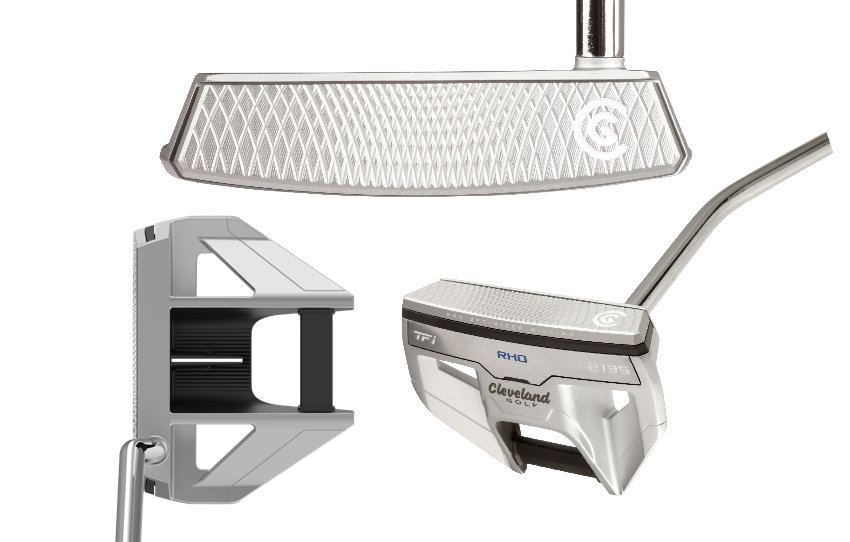
Face material: 6061 milled aluminium with soft polymer TPU backer.
Models with this tech: All six Cleveland TFI 2135 Satin models.
What Cleveland says: A model-specific face milling pattern means more forgiveness on mishits. Putts hit off-centre have more consistent speed, which ultimately means fewer putts missed short. The polymer TPU backer dampens vibrations and enhances feel, which along with the deeper face milling creates one of the softest feeling putters on the market.

How it performed: When we say Cleveland’s Optimized Face Milling delivered the most consistent ball speeds of all the putters (just 0.1mph difference between all putts hit, most were 0.3mph), it’s got to say it does exactly as it promises on the tin, normalising ball speeds. Like the Ping, the Cleveland doesn’t make any promises about improving roll, so hats off to their engineers for producing a fraction more topspin (3rpm) than our average. Admittedly, with the exception of the Bettinardi, the Cleveland skidded putts further than any other, so what you might gain in speed consistency you might lose in skid, but let’s not forget you can get your hands on a Cleveland for £139; a fraction of the cost of some.
See a full Cleveland TFI 2135 RHO putter review here
The anatomy of the perfect putt
And what about a non-grooved benchmark?
There aren’t too many putters available nowadays that don’t come with some sort of face tech that promises improvement in either roll or distance control. We chose Wilson’s Infinite South Side as it’s CNC milled face ensured a flat surface, but it also crucially made no claims about improving roll or skid. No face grooves obviously means less ball-on-putter face interaction, as the South Side created 30% less topspin than our test average, which was flat last bar the Ping. Surprisingly, though, putts skidded the least (tied with the Ping, Evnroll and TaylorMade). We’ve said before that great topspin numbers don’t alone mean a better putt, like more ball speed alone doesn’t just mean more driver distance – it’s getting the right combination of numbers to stack up to gain in performance.
See a full Wilson Staff Infinite South Side putter review here
The anatomy of the perfect putt

Wilson Staff Infinite South Side
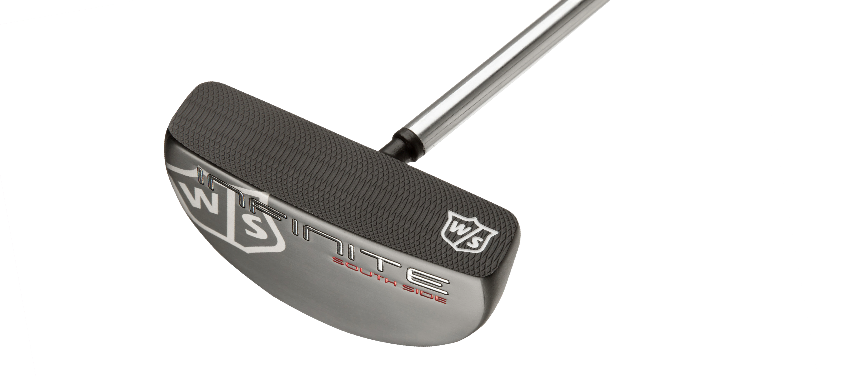
What all this means
Looking through our data there seems to be a real pattern between face tech that goes all-out chasing better roll performance, and those that focus on improving distance control or feel. Models which target roll (the Odyssey OWorks and TaylorMade Pure Roll) seem to deliver more topspin, because the grooves grip the ball into a better initial action at impact. But they don’t always reduce skid. Others that use grooves to improve feel and maximise distance control appear to skid less. In reality, we reckon you need a decent blend of both to find the best performing model for you.
Only one insert finds itself within the top two models for both topspin and skid and that’s the TaylorMade Pure Roll, which is seriously impressive.
It probably goes some way to explaining why TaylorMade putters are currently so popular with tons of tour players. Don’t think we’re saying you should ever by a new putter based on data alone. We’re not. Data is there to help you make a more informed buying decision, and with more Foresight GC Quad launch monitors making their way into pro shops every week, putter fittings should become the norm, just like a driver or iron fitting.
